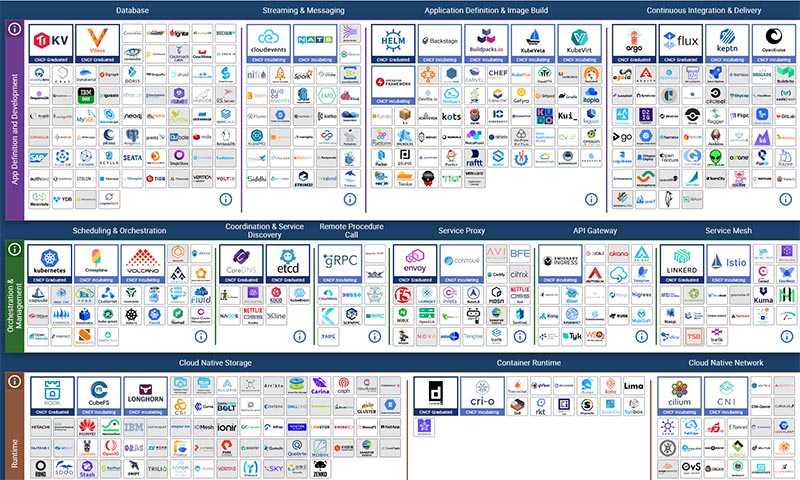What is the CNCF?
Civo Academy - What is the CNCF?
Description
Dive into the world of the Cloud Native Computing Foundation (CNCF) with Civo Academy. Explore the CNCF landscape, understand the maturity levels of projects, and discover how to navigate the cloud-native ecosystem.
The CNCF serves as a vendor-neutral home for many of the fastest-growing open-source projects, including Kubernetes, Prometheus, and Envoy. These projects form the backbone of global technology infrastructure and are hosted by the non-profit Linux Foundation.
The CNCF Landscape and Projects
The CNCF has an interactive tool known as the CNCF Cloud Native Interactive Landscape. This landscape showcases the multitude of projects under the CNCF umbrella.

When a project first enters the CNCF, it is categorized as a sandbox project. As it matures, it progresses to an incubating project, meeting additional requirements such as being run in a minimum of three production environments and having comprehensive documentation. The final level of maturity is graduation, which requires independent security audits, among other criteria.
The CNCF landscape is divided into specific domains such as app definition and development, runtime, and cloud-native storage. Each domain hosts a variety of projects. For instance, the Cloud Native Storage domain includes projects focused on storage solutions, while the Runtime section hosts projects related to container runtime and cloud-native network functionalities.
Navigating the CNCF Landscape
The CNCF landscape can be overwhelming for first-time viewers due to the sheer number of projects. However, the landscape offers filters that allow you to select different categories and view only the projects you're interested in. For example, if you want to view only the graduated projects, you can apply the appropriate filter to see projects like containerd, Kubernetes, CoreDNS, Helm, and Prometheus.
Conclusion
In conclusion, the CNCF hosts a wide array of projects under a single umbrella, promoting vendor-neutral open-source software for the cloud-native ecosystem.
These may also be of interest

It's official - Civo Kubernetes is certified by CNCF
We're really proud to announce that we have been accepted by the Cloud Native Computing Foundation (CNCF) as a conformant Certified Kubernetes provider for our v1.20 Civo Kubernetes product based on k3s.

5 takeaways from the CNCF Annual Survey 2021
The CNCF annual survey 2021 is in and makes for some very encouraging reading for the future of Kubernetes and its place in the tech landscape.

Lessons learned from 3 years inside CNCF
Explore Cheryl Hung's journey in software engineering, ARM adoption, and CNCF insights. Boost your knowledge of sustainable infrastructure and tech opportunities!
